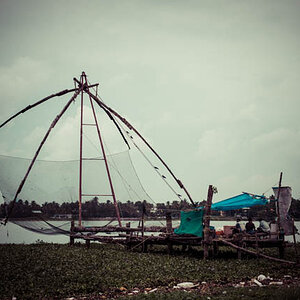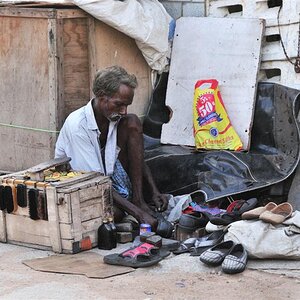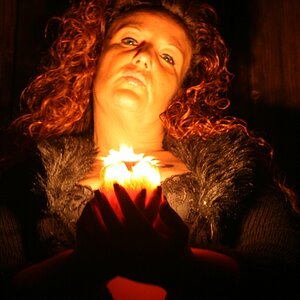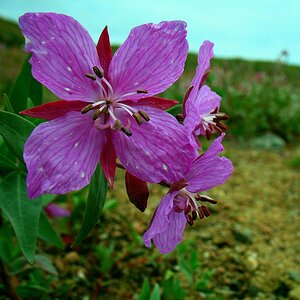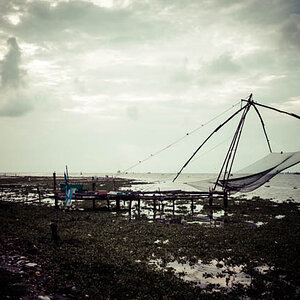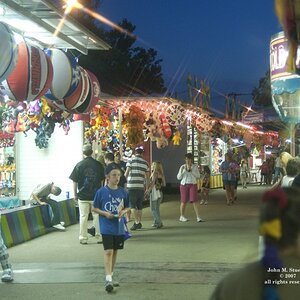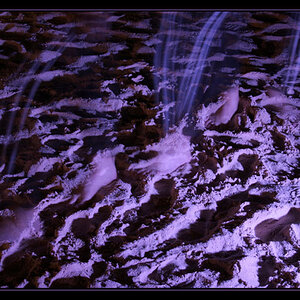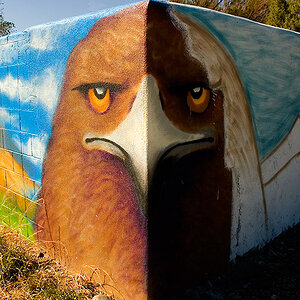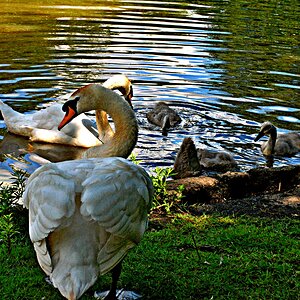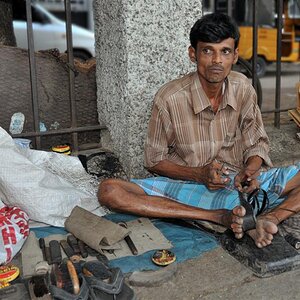Navigation
Install the app
How to install the app on iOS
Follow along with the video below to see how to install our site as a web app on your home screen.

Note: This feature currently requires accessing the site using the built-in Safari browser.
More options
You are using an out of date browser. It may not display this or other websites correctly.
You should upgrade or use an alternative browser.
You should upgrade or use an alternative browser.
tungsten vs quartz halogen
- Thread starter tremor
- Start date
Rob
TPF Noob!
Quartz is silicon dioxide, the most common mineral on earth.
Halogen is a [size=-1]family of chemical elements containing Chlorine, Bromide, Fluorine, Iodine, and Astatine.
Tungsten or Wolfram is a hard white brittle mettalic element.
Tungsten used as a bulb element surrounded by an inert gas would normally have a colour temperature of about 3200K - yellowish.
Quartz Halogen bulbs are used in car headlights and some scientific experiments pertaining to UVB - I believe that their colour temperature is about 3250K which is very similar. AFAIK they have a higher light output than the equivilent tungsten bulb at low voltage and high current, which is why they are very suited to cars. You're not meant to touch the glass on them due to the very high running temperature.
Does that help?
Rob
[/size]
Halogen is a [size=-1]family of chemical elements containing Chlorine, Bromide, Fluorine, Iodine, and Astatine.
Tungsten or Wolfram is a hard white brittle mettalic element.
Tungsten used as a bulb element surrounded by an inert gas would normally have a colour temperature of about 3200K - yellowish.
Quartz Halogen bulbs are used in car headlights and some scientific experiments pertaining to UVB - I believe that their colour temperature is about 3250K which is very similar. AFAIK they have a higher light output than the equivilent tungsten bulb at low voltage and high current, which is why they are very suited to cars. You're not meant to touch the glass on them due to the very high running temperature.
Does that help?
Rob
[/size]
Hertz van Rental
We're supposed to post photos?
Quartz-halogen tends to give out more light and their colour temperature is the same as daylight.
Tungsten are just normal lightbulbs in effect - you used to get photo ones which were overun so they gave out more light but didn't last very long. Much cooler colour temperature.
Typically QI are around 5,200K and tungsten between 3,200 - 4,400K.
The effect is that colour film shot using tungsten looks redish (unless you use proper tungsten film).
Quartz lights are used in the film and television Industry - as well as by some photographers. I love redheads!
Tungsten are just normal lightbulbs in effect - you used to get photo ones which were overun so they gave out more light but didn't last very long. Much cooler colour temperature.
Typically QI are around 5,200K and tungsten between 3,200 - 4,400K.
The effect is that colour film shot using tungsten looks redish (unless you use proper tungsten film).
Quartz lights are used in the film and television Industry - as well as by some photographers. I love redheads!
Rob
TPF Noob!
Hertz is quite right as ever, but I was second-guessing that you're planning on creating a lighting rig from a hardware store and that you were planning to use standard low-voltage quartz halogen bulbs vs standard tungsten. From my experimentation doing exactly this with cheapo halogen floodlights, you will probably find that the colour temperature of quartz is not particularly near to daylight (unlike a studio lighting rig) and that using a white reflector is the best way to neutralise the colour cast and to soften the light source.
You can get filters which will correct things for film cameras, here's a site I found on the subject:
http://www.ephotozine.com/techniques/viewtechnique.cfm?recid=259
You can get filters which will correct things for film cameras, here's a site I found on the subject:
http://www.ephotozine.com/techniques/viewtechnique.cfm?recid=259
Similar threads
- Replies
- 5
- Views
- 403
- Replies
- 0
- Views
- 397
- Replies
- 36
- Views
- 4K

